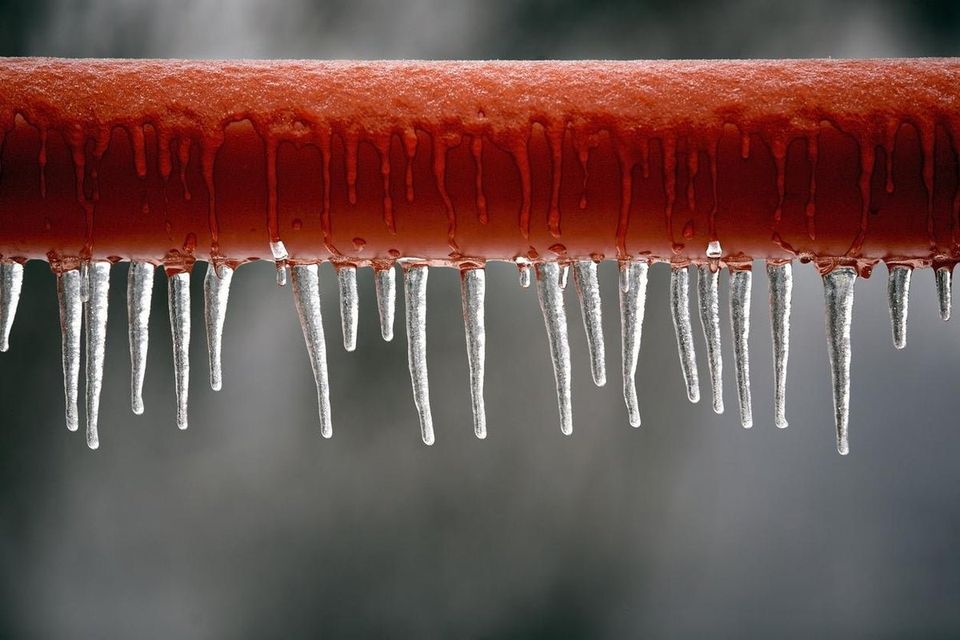On this page down the page you'll find more brilliant advice about How to Prevent Your Pipes From Freezing.

Cold weather can damage your plumbing, particularly by freezing pipes. Here's just how to stop it from occurring and what to do if it does.
Introduction
As temperatures decline, the threat of frozen pipes rises, potentially resulting in costly fixings and water damages. Understanding just how to avoid icy pipelines is essential for house owners in cold climates.
Recognizing Frozen Pipelines
What creates pipelines to freeze?
Pipelines freeze when revealed to temperatures listed below 32 ° F (0 ° C) for expanded durations. As water inside the pipes ices up, it increases, putting pressure on the pipeline wall surfaces and potentially causing them to rupture.
Threats and problems
Frozen pipelines can result in water disruptions, home damages, and pricey fixings. Ruptured pipes can flood homes and create substantial architectural damage.
Signs of Frozen Pipeline
Determining frozen pipes early can avoid them from breaking.
Just how to recognize icy pipelines
Try to find reduced water circulation from taps, uncommon odors or noises from pipes, and visible frost on exposed pipes.
Avoidance Tips
Protecting susceptible pipes
Wrap pipes in insulation sleeves or make use of warm tape to safeguard them from freezing temperatures. Concentrate on pipelines in unheated or outside areas of the home.
Home heating methods
Keep indoor rooms effectively heated, specifically areas with pipes. Open cabinet doors to permit warm air to distribute around pipes under sinks.
Securing Exterior Pipes
Yard hoses and outdoor taps
Disconnect and drain pipes garden hose pipes prior to winter months. Install frost-proof spigots or cover outdoor faucets with protected caps.
What to Do If Your Pipelines Freeze
Immediate actions to take
If you think icy pipelines, keep taps open up to relieve pressure as the ice thaws. Make use of a hairdryer or towels soaked in hot water to thaw pipelines gradually.
Long-Term Solutions
Architectural modifications
Think about rerouting pipes far from outside walls or unheated areas. Include additional insulation to attics, cellars, and crawl spaces.
Updating insulation
Purchase top quality insulation for pipelines, attic rooms, and walls. Correct insulation assists maintain regular temperature levels and reduces the risk of frozen pipes.
Final thought
Avoiding frozen pipes calls for positive steps and quick responses. By recognizing the causes, indications, and safety nets, house owners can protect their pipes throughout winter.
6 Proven Ways to Prevent Frozen Pipes and Protect Your Home
Disconnect and Drain Garden Hoses
Before winter arrives, start by disconnecting your garden hoses and draining any remaining water. Close the shut-off valves that supply outdoor hose bibs and leave the outdoor faucet open to allow any residual water to drain. For extra protection, consider using faucet covers throughout the colder months. It’s also important to drain water from any sprinkler supply lines following the manufacturer’s directions.
Insulate Exposed Pipes
Insulating your pipes is an effective way to prevent freezing. Pipe insulation is readily available at home improvement stores and is relatively inexpensive. Pay close attention to pipes in unheated areas such as the attic, basement, crawl spaces, or garage. Apply foam insulation generously to create a buffer against the cold. You can also wrap your pipes in heat tape or thermostat-controlled heat cables for added warmth.
Seal Air Leaks
Inspect your home for any cracks or openings that could let in cold air. Seal any holes around the piping in interior or exterior walls, as well as the sill plates where your home rests on its foundation. Additionally, make sure to keep your garage door closed unless you’re entering or exiting. Leaving it open creates a significant air leak that can lead to frozen pipes.
Allow Warm Air Circulation
During cold snaps, it’s essential to allow warm air to circulate evenly throughout your home. Leave interior doors ajar to promote better airflow. Open kitchen and bathroom cabinets to help distribute heat consistently around the rooms. If you have small children or pets, be sure to remove any household chemicals or potentially harmful cleaners from open cabinets for safety.
Let Faucets Drip
A small trickle of water can make a big difference in preventing ice formation inside your pipes. When temperatures drop significantly, start a drip of water from all faucets served by exposed pipes. This continuous flow helps prevent the water from freezing. Additionally, running a few faucets slightly can relieve pressure inside the pipes, reducing the chances of a rupture if the water inside does freeze.
https://choateshvac.com/6-proven-ways-to-prevent-frozen-pipes-and-protect-your-home/

Hopefully you liked our part on Winter Plumbing Precautions: Preventing Frozen Pipes. Thanks a lot for finding the time to browse our post. Liked our blog entry? Please quickly share it. Let others locate it. Thanks a lot for going through it.
Schedule Estimate
Comments on “How to Safeguard Your Plumbing from Freezing: Critical Strategies”